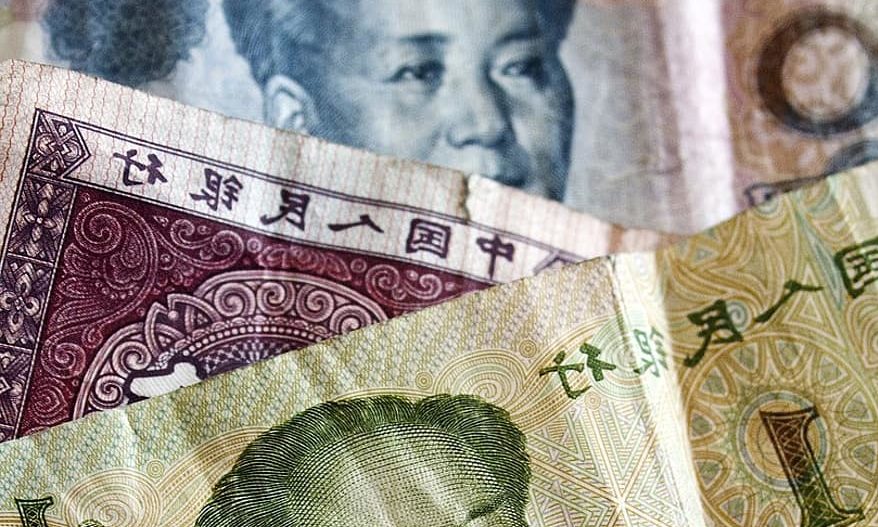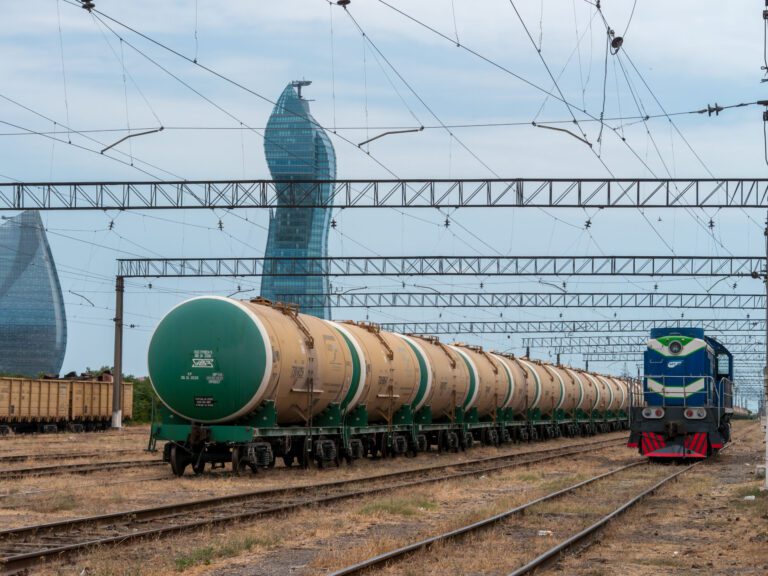
Countries in Central and Eastern Europe have been perceived to have a less sensitive attitude towards foreign direct investments (FDI), leading to a common reputation as an easier entry point into the EU for foreign investors. Unfortunately, the fact that FDI enjoyed less scrutiny bureaucratically in the region is accurate. Prior to the debate on the European level, screening mechanisms existed solely in Latvia, Lithuania, Hungary, and Poland. As national legislation is constructed, different threat perceptions can be observed when it comes to critical sectors and industries sensitive to foreign takeovers. Due to fragmentation in approaches, gaps to be exploited by Chinese, and other third-country companies emerge.
The Technology Factor
Since the start of the cooperation between China and CEE through the ‘17+1’ initiative, many Western European policy observers have expressed their concern over China’s increasing economic engagement. With time, it has been proven that Chinese FDI in the EU has been consistently concentrated in countries in Northern and Western Europe, refuting the notion of unbalanced investment relations with CEE. In reality, disappointment over the statistically insignificant investments has manifested broadly across the latter region, as seen in the Czech Republic, Romania, Slovakia, and the Baltic states.
In addition, the nature of Chinese investments differs, with more costly acquisitions in the automotive, pharmaceutical, telecommunication, and semiconductor industries being concentrated in the West. Notable examples include the acquisitions of German Kuka and EEW Energy from Waste, Swedish Silex Microsystems, French Linxens, and Dutch NXP RF Power and Nexperia. Chinese acquisitions of technologically advanced companies occurred in CEE countries as well, highlighted by Polish companies Novago and Huta Stalowa Wola, Estonian Magnetic MRO, as well as the Hungarian firms BorsodChem and Invitel Group. Yet, compared with western Europe, they remain remarkably limited in number.
One of the main rationales is that big tech companies in CEE are simply not that numerous when compared to the West, limiting any major Chinese acquisitions in the sector. The divergence in investment stock and industries pursued by China has naturally led to different attitudes on which sectors have been perceived as in need of oversight. As Germany has become a target for technological acquisitions, it’s intelligence services have voiced concerns about granting Chinese firms access to coveted technological know-how through investments.
In contrast, while countries in CEE have been aware of the dangers FDI may pose to national security, their concerns were constrained in scope and legal action prior to the legislation on the EU level. The debate in the Czech Republic and Slovakia was limited to the energy sector, failing to result in legislative changes. Similarly, Romania and Estonia pursued investment screening in only certain sectors of importance to the state- petroleum and the real estate specifically.
Diversity Without Fragmentation?
Legislative deliberations on screening FDI started in 2019 and 2020 in the Czech Republic, Slovakia, and Slovenia. At present, only Slovenia has legislation approved and implemented on this front. An FDI notification obligation for foreign investors arises only if the acquisition is to take place in predefined sectors. The asset-related list is broad, encompassing both traditional sectors such as energy, transport, water, and defense, as well as technologically related ones such as artificial intelligence, robotics, semiconductors and others. Furthermore, the transaction has to result in the investor acquiring 10% or more in capital or voting rights in a Slovenian company for the screening to be started.
The Czech Republic’s draft law has proposed a less comprehensive asset-related list than Slovenia, choosing to address investments in the sectors of military equipment, dual-use items, critical infrastructure, and communication technology specifically. Prior regulatory approval is required in these sectors, with other investments still potentially exposed to screening if security risks are found. Nevertheless, Czechia has created a more extensive checklist for the respective screening authority when it comes to establishing whether the foreign entity is gaining an effective level of control through the acquisition. Next to the 10% or more ownership requirement, the screening authority can take into account whether the acquisition enables the investor to i) access sensitive information of the target company, ii) acquire an asset through which the targeted company performs its economic activity; or iii) become a member of a body of the target company.
Countries implementing screening mechanisms prior to EU debates have undergone a deepening of the scope of their regulations, as seen with Hungary and Poland. Hungary’s asset-related list has a traditional outlook on strategic sectors, encompassing investments in defense, dual-use items, financial services, and electricity generation. In response to the COVID-19 pandemic, new temporary measures were introduced which broaden the scope of sectors screened, including telecommunications and computer products amongst others.
Following this trend, Poland’s asset-related list has also been temporarily expanded, now covering investment in electricity generation, telecommunications activities, production and distribution of crude oil or natural gas, and production of chemicals and fertilizers. The legislation also grants jurisdiction over transactions in IT companies that provide programs used in the power industry, water supply, and telecommunications for two years. Transactions undergo review when they result in ownership of at least 20% and are in companies that have had an annual turnover exceeding €10 million in any of two fiscal years preceding the acquisition.
Evidently, there is fragmentation with regard to the sectors targeted and the criteria screening authorities may consult. While an acquisition might be screened under Czech law as it is considered to create an effective level of control, a similar transaction may not be screened under Polish law due to the target entity having a low financial turnover.
Even after the Commission’s recommendation for the establishment of screening mechanisms, debate beyond transposition has not been raised in Bulgaria, Croatia, Estonia, and Romania. A recent study by the OECD put forward the proposition that these countries have a high level of state-ownership in the first place, making acquisition and ownership-related policies in the sectors controlled redundant. A possible consequence is that those countries will not develop mechanisms of their own in the future, limiting their efforts to transpose the EU Regulation in their domestic law and only protect those industries with state ownership interest. This is problematic as acquisitions in sectors that do not have a high-level of state ownership but are nonetheless sensitive, such as semiconductors, may not be subject to review in the first place.
Closing Gates for Chinese FDI?
Prior to the Regulation entering into force, there appeared to be no correlation between the FDI from China into countries without screening procedures. However, as the key characteristics of the Regulation are bolstered cooperation between the Member States and increased scrutiny, challenges to incoming Chinese investments are likely to emerge.
According to estimations of Rhodium Group and MERICS, 82% of Chinese acquisitions in the EU in 2018 would have fallen under at least one of the criteria listed in the EU Regulation, mostly those concerning government ownership. Private-owned enterprises can still be subject to scrutiny, as additional factors to determine indirect control include whether the investor has received significant funding by the government of a third country or is pursuing state-led projects, which would also lead many Chinese investments to fall afoul of the Regulation.
To conclude, three important observations can be made in regard to Chinese FDI in CEE. First, discrepancies remain among CEE countries’ screening approaches. While countries like Slovenia have an extensive asset-related list, others like Bulgaria do not have additional screening legislation next to the EU-wide cooperation mechanism, resulting in a weaker bureaucratic shield against investments. Attention should be paid to such countries as there is the likelihood that they may become testing grounds for gaps in the overall EU mechanism.
Second, CEE lags behind its western counterparts in protecting sensitive industries. While the EU debate has certainly expanded the scope of crucial issues discussed, policy elites from the region have yet to address the threats stemming from technological espionage. As the final implementation of the EU framework rests in the hands of Member States, it is crucial which sectors they perceive as sensitive.
Third, the disappointment with the level of FDI and China’s overall engagement is not a uniform trend across CEE. The Hungarian government has decided to classify information related to the Belgrade–Budapest railway, which is 85% financed through a Chinese loan, justifying the classified status by arguing the project overrides public interest. Similar developments can be foreseen with investments that are considered a political priority, resulting in attempts to circumvent both national screening mechanisms and opinions issued by the other Member States under the EU mechanism. As a result, Chinese investors may opt for a buying spree in a limited number of countries in CEE, in which China enjoys warmer relations.
In any case, current regulation and the newly emergent national mechanisms have put the topic of FDI screening on the table in both Brussels and national capitals. Most probably, there will be more scrutiny and challenges to Chinese investments and this is good news for the CEE. Efficient information flows and greater transparency, as a result of assessing investments, will have positive spillover effects on the awareness of China’s broader goals and methods.
Written by
Mirela Petkova
petkova_mirelaMirela Petkova is a freelance researcher and a Data Analyst for Energy Monitor, Bulgaria. She has previously worked as a Junior Researcher at the Clingendael China Centre, the Netherlands. She is an alumna of the University of Groningen.


